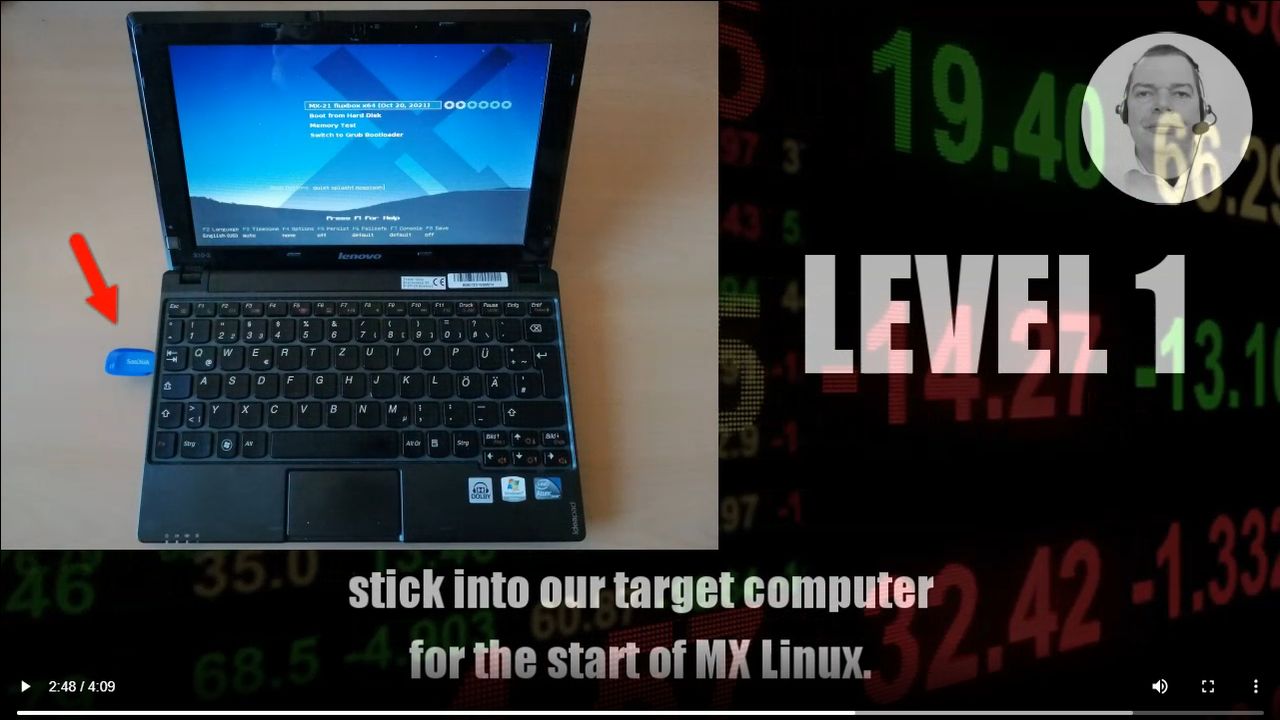
Our new documentation series on setting up your own Algo Trading System Farm is now available for viewing. We use automated voices and technology to assist you in improving your outcomes more quickly and with less work than ever before. MX Linux is covered in detail in this section, which will cover the basics of the installation. First and foremost, you must learn how to modify the starting settings on your computer in order for the installation to be successful later in the process. This varies based on the kind of computer, but in most cases, hitting a certain key, such as Escape or F1, will allow you to access the setup menu. There is an option to start the computer from a USB stick that may be configured. But first and foremost, we must make this USB stick.
There are a variety of applications available for this, and the functionality varies based on the operating system. The vast majority of people who watch these videos will most likely be using the Windows operating system, and there is a very simple and straightforward method of creating a USB stick from our obtained ISO file. We said in the last section that we wanted to obtain the 64-bit version of Fluxbox. However, a 32-bit version of MX Linux is available for download on the company’s website. As a result, even computers that are 15 years old may be utilized with the newest software. We will take a device from the year 2010 as an example. As a matter of fact, I have a few netbooks that are only compatible with 32-bit operating systems. They are able to run MX Linux smoothly even when just one GB of RAM is available. These devices, on the other hand, are not particularly well suited for use in the construction of an algo trading server farm.
Instead, we make use of a Tecra A11 laptop that was manufactured in 2010. However, while this device is no longer a high-performance computer, the RAM may be increased to 8GB. Previously, this would have been prohibitively costly, but in the meanwhile, technology has advanced to the point that RAM for such old systems is now quite affordable. Now, in order to build our bootable USB stick, we’ll need to download and run the proper application. Consequently, we begin by downloading the portable version of the program Rufus for our Windows-based computer. Rufus is a piece of software that may be used to generate a bootable memory stick in a matter of minutes, even if it has not been installed on your Windows computer. The portable version may be launched with a single mouse click when the download has been completed, and from here we will be able to obtain the appropriate ISO image of the version we downloaded for MX Linux. We’ll also need a USB stick that’s capable of serving as a bootable storage media for our software.
The majority of modern USB sticks should be able to do this without any issues. We have a 32 gigabyte USB stick here, but if you have an old USB stick laying around with 8 GB or more, that would do. Be cautious to double-check that you have chosen the right configuration for the destination disk before attempting to copy the ISO file to the USB stick. Should there be any uncertainty, please unplug any external USB devices, such as hard drives or SD cards in the case of laptop computers. This will assist in avoiding any misunderstandings. After you have completed all of the necessary adjustments, click on the relevant button to begin the process of creating the USB stick. This should take no more than five to ten minutes to complete. Following the successful completion of this step, we will enter our freshly manufactured USB stick into our target machine in order for MX Linux to begin functioning properly. Don’t be concerned, nothing will be installed till later. MX Linux will initially run in test mode on the target computer prior to beginning the installation procedure on that machine. This provides you with the chance to test everything before overwriting your previous operating system with the new one.
For those who wish to make a backup of their previous Windows system before replacing it with MX Linux, there is a very nice and free option available from a firm named Lazesoft. It is referred to as the “Recovery Suite.” You may also use it to restore the installation from your Windows system to a USB drive, if that is what you need to do. The Recovery Suite is also capable of backing up even big Windows installations to an external hard drive via the use of a USB connector, which is an added bonus. As far as the preparations for the installation of our first server for our Algo Trading System Farm are concerned, that is all there is to it at this point. Subscribe to our YouTube channel if you want to learn how to build your own Algo Trading System. Check out the premium course on our website if you want better results more quickly than with the free course. Alternatively, you may send us an email if you have any concerns or recommendations concerning the content of this movie. We always respond personally and, in most cases, within 24 hours. For the time being, we’d want to thank you for your interest and look forward to seeing you in the future video.




